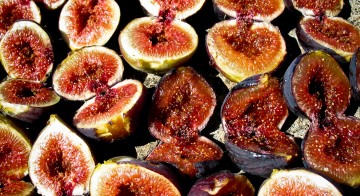Dehydrating backpacking food at home is a good way to save money and reduce sulfite exposure
You can save money and eat higher-quality foods by dehydrating fruits, vegetables, and proteins at home. In addition, if you suffer from sulfite sensitives (the preservatives used in most commercially dried foods), dehydrating food yourself may be your only option in avoiding sulfites.
List of ingredients worth the effort to dehydrate
Some ingredients are better purchased commercially dried
Some commercially dried foods are inexpensive and it’s worth checking out the local grocer’s bulk section before dehydrating them yourself. I’ve put together a list of foods that I generally think are worthwhile for dehydrating yourself. I’m judging primarily on cost, and secondly on quality/flavor improvements that can be had when you do it yourself.Foods that are sometimes worth dehydrating yourself:
- tomatoes
- pineapple — can sometimes be had very cheaply from fruit markets
- mushrooms — expensive dried, but you can sometimes find good deals, especially in Asian markets on Shitake mushrooms
- berries can be cheaper to dehydrate yourself
Foods almost always worth dehydrating yourself:
Vegetables:
- artichoke hearts
- beans of all kinds (make sure they are fully cooked!)
- beets
- bell peppers
- cabbage
- carrots
- celery
- corn
- cucumber
- eggplant
- hot peppers
- kale, other greens
- leeks
- mushrooms
- onions
- parsnips
- peas
- potatoes – diced or cubed only (can be bought frozen), dried flakes, slices, and shredded is readily available pre-dried
- rutabaga
- spinach
- squash (Summer and winter)
- sugar snap peas
- sweet potatoes and yams
- tomato sauce, tomato paste (make fruit leather)
Fruits to dehydrate:
- bananas
- cantaloupes
- cherries
- honey-dew melons (hit and miss)
- kiwi
- peaches (puree and make a fruit leather)
- pears (puree and make a fruit leather)
- strawberries
- watermelon
Meats and proteins that dehydrate well:
- ground beef
- ground sausage
- sliced lunch meat
- bacon
- Canadian bacon
- tofu
- tempeh


